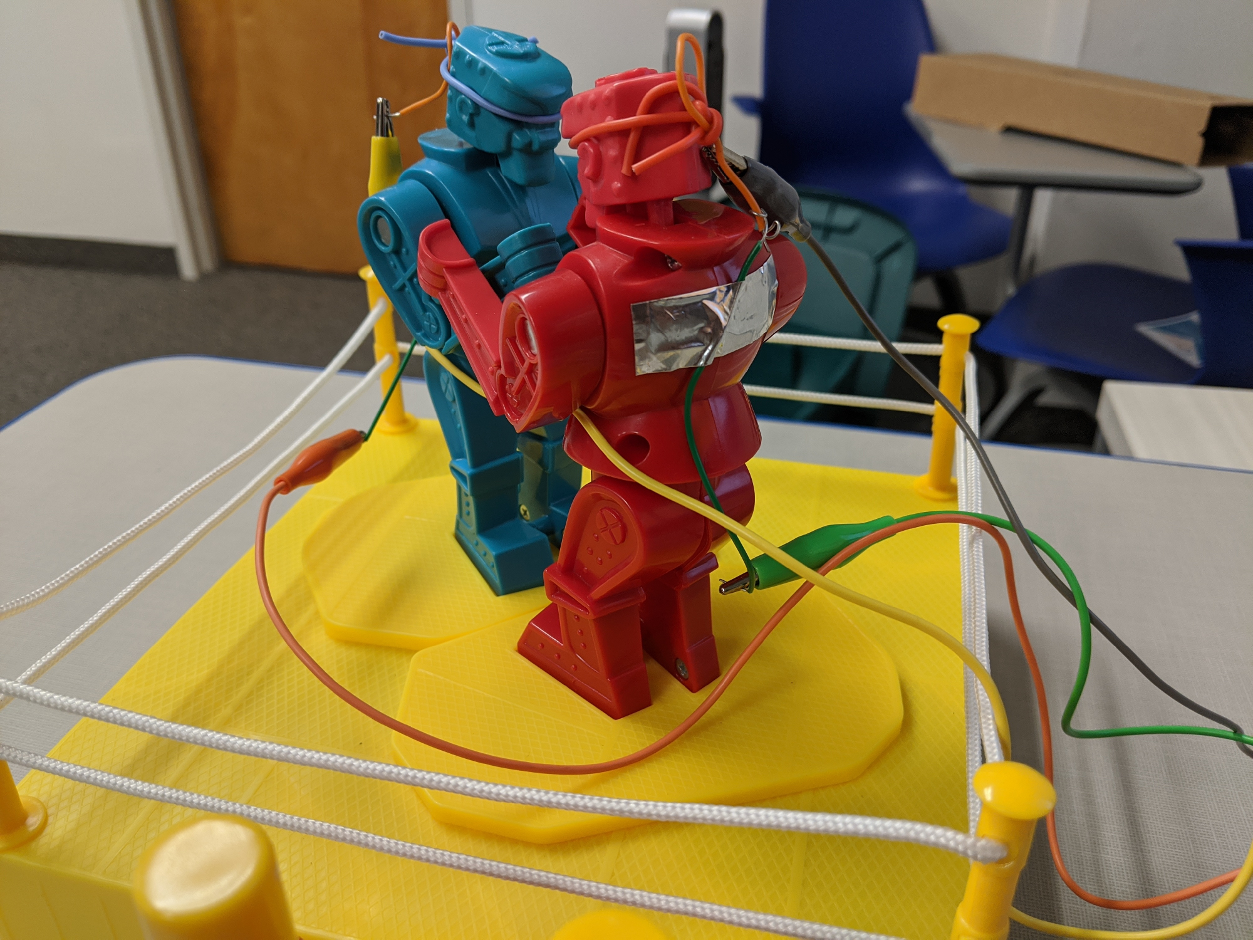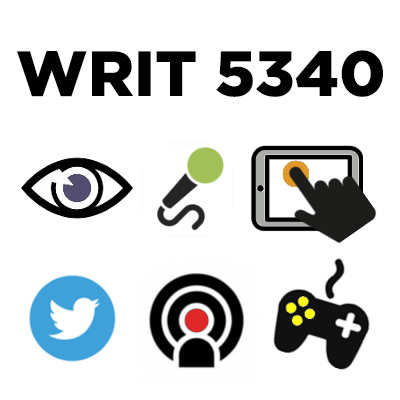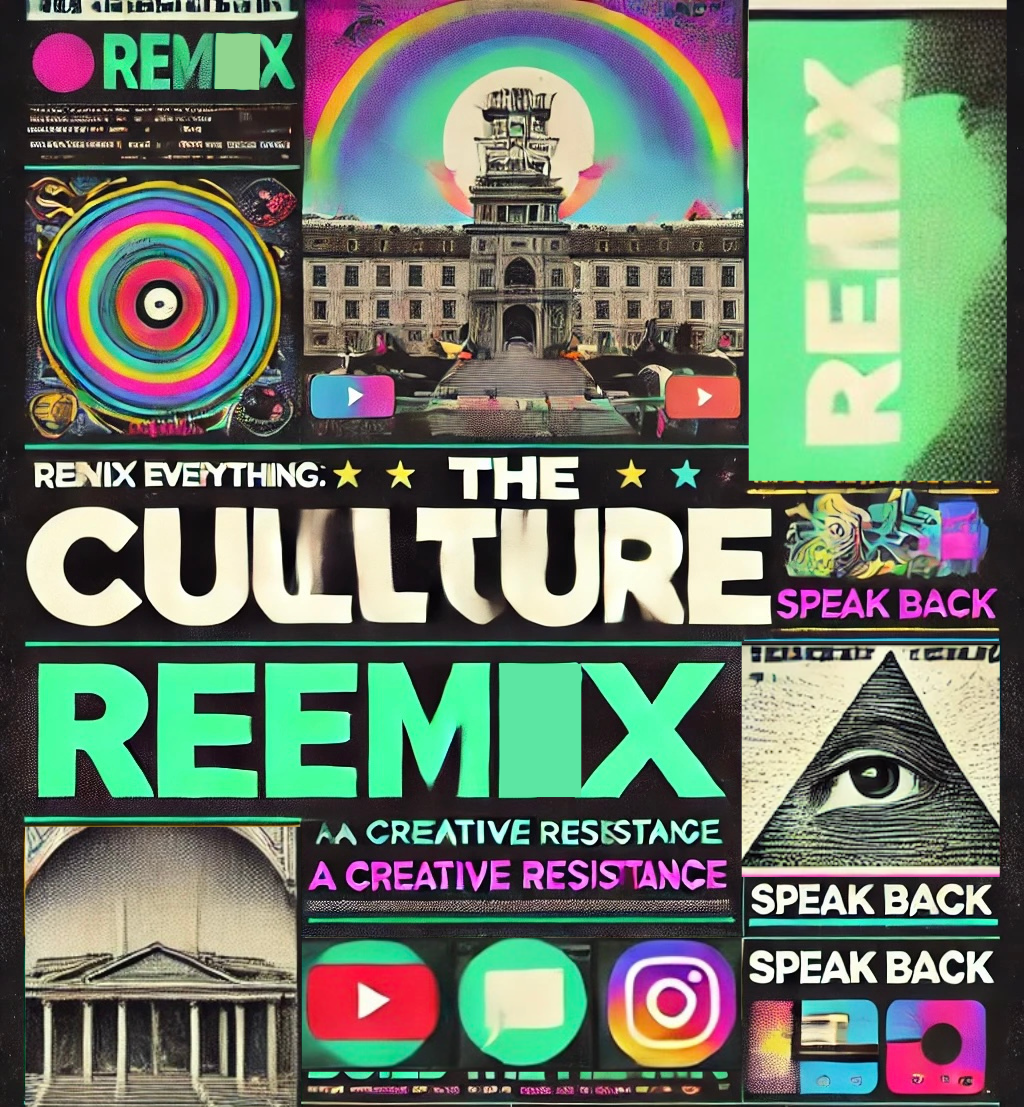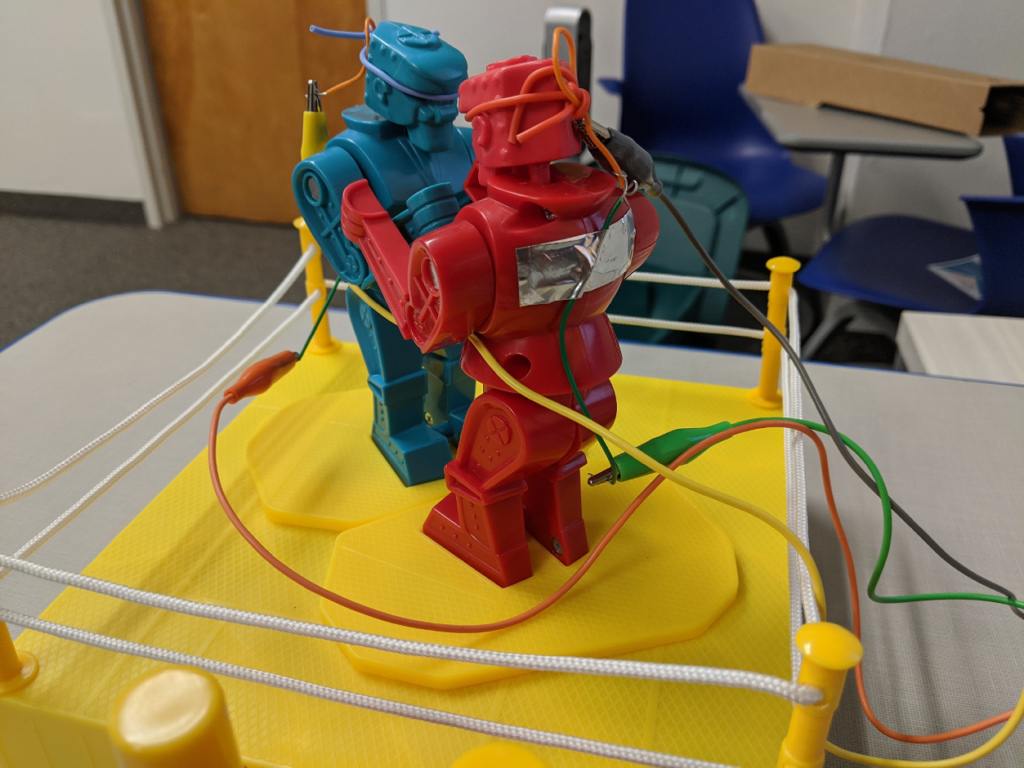
- Maker: Merly Mesa
- Genre: Eversion
- Level: Graduate
- Program: Composition, Rhetoric, and Digital Media
- Course: WRIT 5400: Technical Writing
- Instructor: Dr. Eric Mason
- Semester Created: Winter 2020
Description:
“Rock ‘Em Sock ‘Em Sandwiches” is a twist on the classic game of “Rock ‘Em Sock ‘Em Robots.” While there is no difference in gameplay, the two versions differ in terms of scoring. “Rock ‘Em Sock ‘Em Sandwiches” is auto-scored by a program coded in Scratch (a visual programming platform and online community). Additionally, the game pieces are meant to represent more than just two ordinary boxers. In this new version, the fighters act as agents for two real-life competitors: Chick-Fil-A and Popeye’s. As agents of these fast food restaurants, they fight for the chance to declare their chain’s chicken sandwich the best of them all.
Reflection:
Where the Idea Came From
The idea for this project arose from current events. With the recent debut of Popeyes’ new chicken sandwich, there has been additional competition between the two companies. Not only are the companies feuding in virtual spaces (social media channels), but customers have entered into physical arguments over whose sandwich reigns supreme. Both companies have also been under scrutiny and protested for either their political/religious views (Chick-Fil-A) or their use of racist caricature (Popeye’s). This project was another way to showcase the anger that surrounds these popular restaurant chains.
How it Works
The “Rock ‘Em Sock ‘Em Robots” are attached to a circuit board called a Makey Makey. This circuit board sends signals to a scoring program coded in Scratch. To score a point, a player must successfully get their opponent’s head to “pop up.” When this happens, a wire attached to the head of the robot is pulled taut and makes contact with another wire attached to the body of the robot. The contact creates a loop (i.e. completes a circuit), which sends a signal to the Makey Makey to log the point. Each robot has its own loop. For the purpose of coding, one is assigned the left arrow key and another, the right. On-screen, the player is informed that they have scored a point by both an increase in point value, as well as a change in the page background (e.g. when Chick-Fil-A scores, the company’s cow mascot appears on screen). The Scratch program is essentially a series of “if-then” statements that act based on input from either the left or right arrow on the Makey Makey.

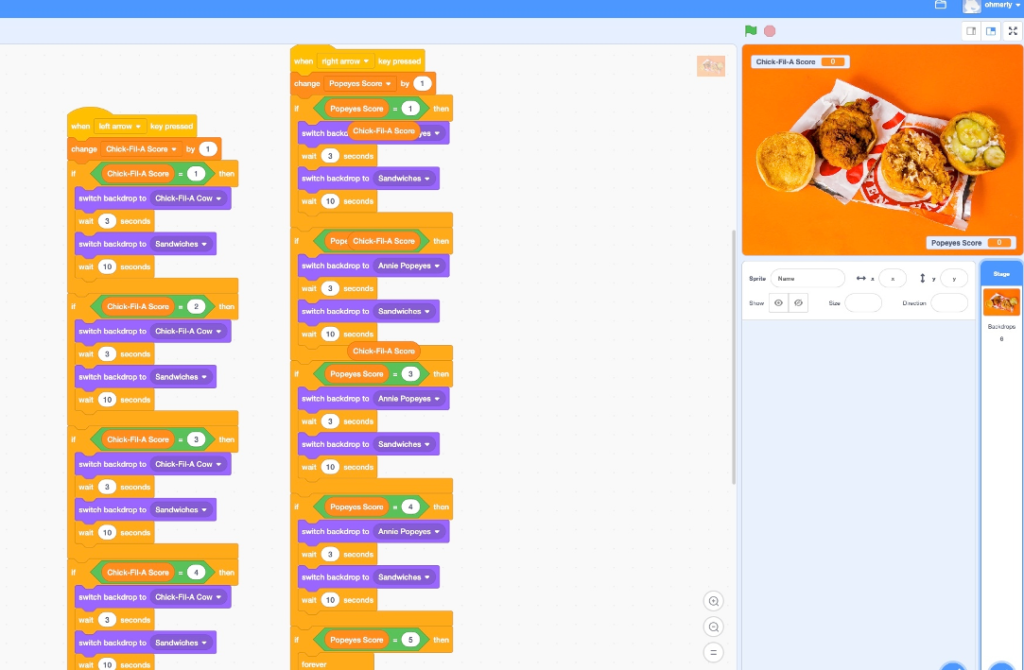
Why it Matters
When this game was played by undergraduate students at a showcase, the most frequently asked question was, “How does it work?” The answer required a conversation about circuits and coding; a conversation that was generally met with awe. While this project won’t change lives, it serves to highlight how the virtual can inform the physical and vice versa (eversion). It is a demonstration of what David M. Reider writes about in Suasive Iterations: “There is no longer a conventional, binary relationship between the analog and the digital, and this realization put into practice transforms our sense of self and those relations comprising our interactions with objects and environments” (5). Creating this project also involved learning new ways to compose, not about technology, but with technology. Writing code in Scratch; creating circuits with the Makey Makey–these are some of the composing languages of the future, and are important for everyone (not just those interested in pursuing technical or digital writing careers). They’re important to understand, even at a basic level, because these technologies and languages are everywhere (ubiquitous computing). We surrender power to technologies by not understanding how they operate. By becoming more engaged with technologies, through projects like this, we regain our ability to shape how they are used and what messages they convey. For example, this project takes a meaningless game about two nondescript fighters and asks players to choose a side between two real and problematic companies. It forces players to come consider the reality that what they are doing in a virtual/ physical play environment is actually happening in the real world.

